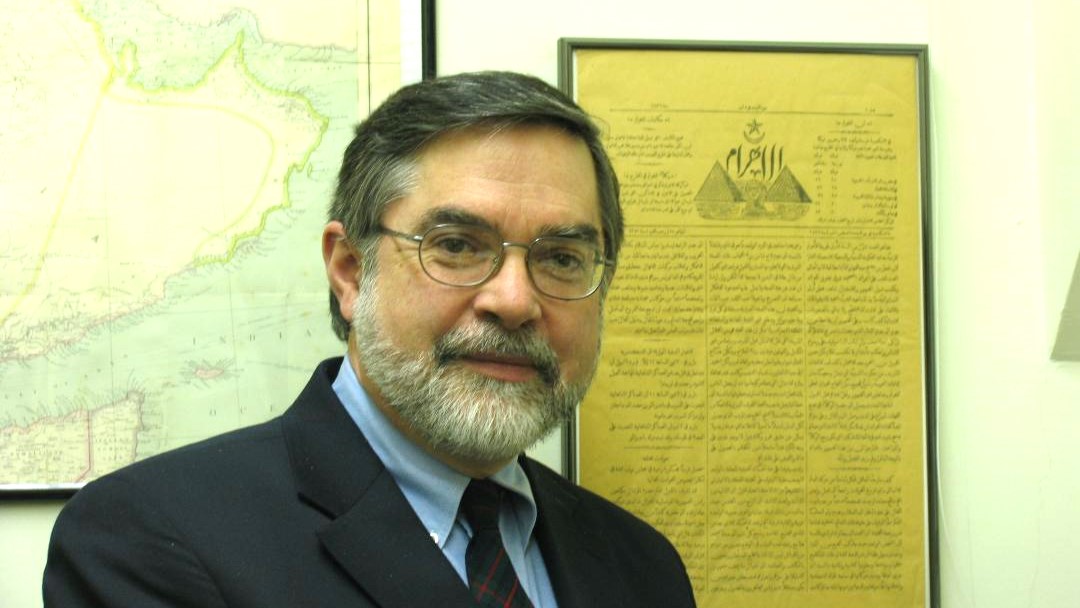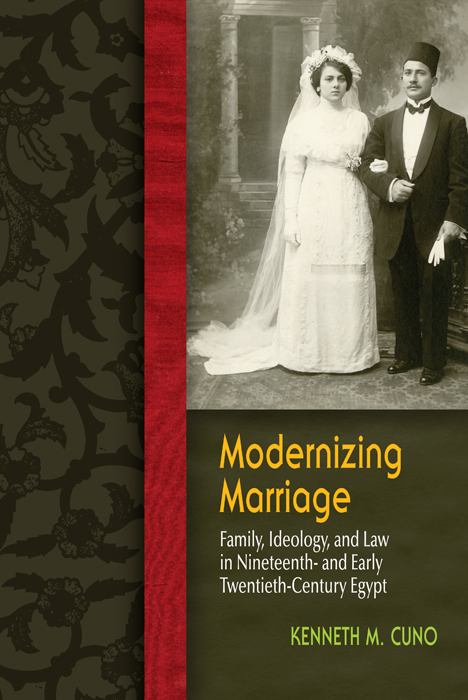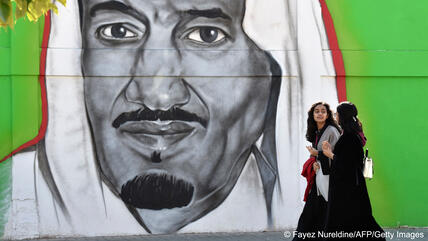The long road to modernising marriage

Professor Cuno, you point out that at the end of the nineteenth century, we began to witness changes in the concept of marriage in Egypt. How did this happen, and was it the result of the influence and emulation of European ideas, or were there other reasons?
Kenneth Cuno: Change was not driven entirely by European ideas, but they were important. What is crucial is to understand what Egyptian intellectuals did with those ideas. The association of a particular family system with advancement ("civilization") was originally a European idea. Europeans asserted that differences between their family system and those of others accounted for European superiority.
Egyptian and Ottoman thinkers followed that logic and adopted European ideas selectively to achieve social advancement. They justified these ideas – women's education, discouraging polygyny and limiting divorce – by referring to Islamic sources and history. Aisha bint Abi Bakr, for example, was literate.
At the same time, they combined those ideas with the "maintenance-obedience relationship" in marriage, which was derived from Islamic jurisprudence. I therefore describe the modern Egyptian family ideology as a hybrid, not a case of Westernisation in the old sense of the term.
A force for change after World War I, ideology spread in the print media, films and school curricula. Before the war political and demographic factors were more important. The Khedival family set a public example of monogamy that the rest of upper-class society emulated over time. The end of slavery eliminated one form of polygyny and raised the status of women overall. Secondary and post-secondary education for middle- and upper-class men meant delayed marriage, which increased the likelihood of conjugal family households. The age of marriage rose during the late nineteenth and early twentieth century for reasons we do not yet understand.

Correlation between wealth and polygyny
Some doubt the spread of polygamy in the cities of the region. Polygamy was not popular or practiced on a large scale in cities such as Damascus in the eighteenth century. Margaret Meriwether, for example, pointed out in her book about Aleppo that polygamy was not desirable there, during the same period.
Was polygamy widespread in Egypt in the eighteenth century and the first half of the nineteenth century, or did it occur only within specific groups? What were the reasons for this?
Cuno: We have no aggregate statistical data on polygyny in Egypt before the British period. The censuses of 1848 and 1868, which in Egypt included women, did indicate if a woman was married and to whom, but did not indicate whether slave women were concubines, and I include concubines within the system of polygyny. The village census registers I inspected showed a correlation between wealth and polygyny. The patriarchs of large multiple family households, which almost always held the largest amounts of land in a village, often would have multiple contractual wives. The trade in African slaves peaked in the 1860s and wealthy villagers owned slaves. It is likely that concubinage increased in that decade as a consequence.
Polygyny in the ruling class was part of the system of reproduction of the Khedival and imperial families. It was also a way of displaying grandeur, something that gave the rulers legitimacy. The upper classes emulated the rulers, so we also find polygyny in that social stratum. We see this, for example, in Nelly Hanna's study of the seventeenth-century Shabandar of Cairo. Muhammad Afifi in his study of the Copts in the eighteenth century mentioned that wealthy Copts practiced plural marriage, as did wealthy Jewish men.
The nineteenth-century intellectual Ali Mubarak claimed that polygyny was something brought to Egypt by the Turks. He was incorrect, but this was a way of claiming that it was not intrinsic to Egyptian culture.
Margaret Meriwether's findings agreed with those of Nelly Hanna, that despite ruling- and upper-class practices, women especially disliked polygyny and many families insisted upon stipulations in the marriage contract that would deter a man from taking a second wife or a concubine. I understand that delegated divorce, or tafwid al-talaq (تفويض الطلاق), is common in educated circles in Egypt today.
In the early twentieth century about six percent of married men were polygynous, the percentage declining thereafter. These days, it is regarded as a backward practice and portrayed as such in novels and films.
Role of women as caregivers and educators
You mentioned the emergence of a new family ideology. How did this idea appear in Egypt and later affect the marriage pattern?
Cuno: The new family ideology had its beginnings in the writings of modernising intellectuals like Rifaʿa al-Tahtawi, Ali Mubarak and their Ottoman counterparts. It was advanced by later thinkers like Muhammad Abduh and Qasim Amin. For them, the function of the conjugal family was to form the character of young men who would advance the society and nation. Thus, the role of women as early caregivers and educators was emphasised, along with the importance of women's education to prepare them for that role. With the partial exception of Qasim Amin, none of these men envisioned women using their education to earn a living. For them, the sole purpose of women's education was to prepare them for their domestic role. Al-Tahtawi is famous for advocating universal education for both girls and boys, but he was very clear that girls' education should be limited to the primary level.
In the late nineteenth and early twentieth century, popular periodicals featured articles for women on household management that expand the domestic duties of married women. This discourse was an international phenomenon; Indian periodicals of the same era featured similar instructive articles. There also was at the turn of the century an international campaign against child marriage and this is reflected in the setting of a minimum marriage age in Egypt in 1923. But as I have mentioned before, I do not see the new family ideology becoming hegemonic until after World War I. It then spread with the development of print media, in film and later in television, as well as through school curricula. The end of that transition was arguably represented by the wedding of King Faruk and Farida in 1938, which was a public affair presenting them as a modern romantic couple. The magazine al-Musawwar devoted a special issue to the wedding.
New marriage concepts
In your book, you draw attention to the role of Muhammad Abduh and his colleague Qasim Amin in formulating new concepts relating to marriage. What prompted this development?
Cuno: Muhammad Abduh grew up in a polygynous family and apparently took from that experience a conviction that polygyny was destructive for a stable family life. Al-Tahtawi and others had discouraged polygyny, despite the Koranic verse 4:3 permitting plural marriage, saying that men in modern times are not as virtuous as those in the time of the Prophet Muhammad, so they could not treat plural wives equitably, as enjoined by the same verse. Muhammad Abduh went further, reinterpreting 4:129 ("you will not be able to be equitable between your wives") to amount to a near prohibition of plural marriage. He proposed that polygyny be restricted only to those situations in which a man can convince a judge that his wife cannot bear children and that he has the means to support an additional wife. Women's rights activists have repeatedly tried to write that into Egypt's personal status law without success.
Generations of commentators have missed the point that Qasim Amin's book Tahrir al-Mar'a is mainly about women in the family. He reprises the argument that women's education is a social good because it will make them better at rearing children, better at household management and better companions for their husbands. He also said that that women's education would enable them to earn a living if they were divorced, widowed, or abandoned, and lacked resources for themselves and their children. He is the first male intellectual to approve of women working, though only in the absence of a male provider. Controversy centred on his view that women's education would be inadequate unless they were able to be present in public spaces for legal purposes, business and education. He cited the jurisprudence (fiqh) that said women could appear in public spaces and mingle with unrelated men with their hands and faces uncovered for a chaste purpose. The controversy was due to the sensitivity of the veil, which was a focus of Western criticism. Qasim Amin was accused of merely repeating those criticisms, but he was extending the arguments made by previous reforming intellectuals.
Women also wrote about marriage and the family. Malak Hifni Nasif, known by the pen-name "Bahithat al-Badiya", was a schoolteacher before her marriage, while Zaynab Fawwaz was a journalist. They endorsed the domestic ideology while asserting that women could manage a family while working. Their views are a foil to the occasionally naïve views of the male intellectuals about women.

The patriarchy is crumbling
With regard to gender justice, things look bleak in the Arab world. Laws typically discriminate against women, while national legislation all too often does not comply with the international agreements governments have signed. By Mona Naggar
Romantic love emerges as a factor
You indicate that by World War I, love had emerged as a factor in choosing marriage partners. Did the idea of love become firmly established? Are other factors still present in choosing a wife in a city like Cairo?
Cuno: One can see the theme of love in popular stories published beginning around the turn of the twentieth century, and of course love is a big theme in films and later in soap operas (musalsilat). But they are not a reflection of reality any more than the role of love in the Jane Austen novels. On the contrary, the drama comes from the reality of social conventions and family expectations that make love matches difficult. In the late twentieth century, the scholarship and my personal unscientific observation suggests that Egyptians still rely on family and friends to put them in contact with suitable marriage partners. And the families are involved. Families have an interest in their children having successful marriages, not only for the happiness of their children, but because of the dire financial consequences of divorce. And families participate in marriage negotiations, since marriage is an occasion of transfer of significant wealth. That is why people were and are so upset over the phenomenon of clandestine "Islamic" or "customary" (ʿurfi) marriage. The notion that the family should be involved in their child's choice of a marriage partner is still widespread. Love and commitment are expected to develop over time in the relationship.
Interview conducted by Mohamad Alrabiuo
© Qantara.de 2024
